In this guide, we’ll walk you through how to protect content in your WordPress site using the WordPress plugin, Passster.
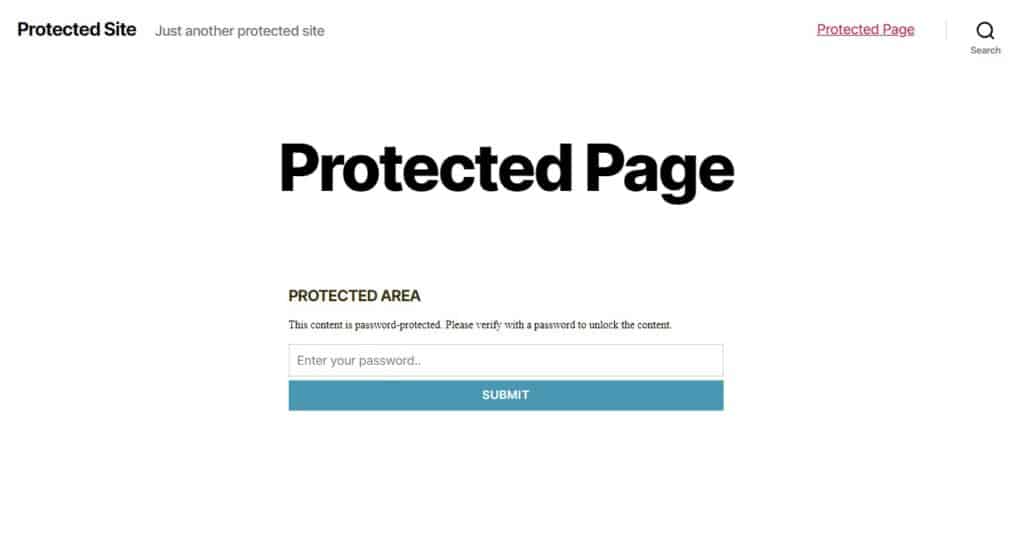
We’ll include a few different methods to protect content, including password protecting, protecting via CAPTCHA, and encrypted links.
But first, let’s take a look at Passster and why it’s the best WordPress plugin for protecting your content.
Table of Contents
Why use the content protection plugin Passster?
Passster a the smart and no-nonsense content protection plugin for your WordPress website.
While WordPress itself has some default content protection methods (via a single password or visible only to site admin or editors), a lot of the time, this simply isn’t enough.
Passster allows you to protect or hide WordPress pages, posts (including custom post types), parts of pages, your entire site, and WooCommerce products (if you have an ecommerce site) with any of the following methods:
- Single passwords, multiple passwords, and/or password lists.
- reCAPTCHA protection.
- Encrypted link.
Plus, Passster allows you to create custom password forms. Tailoring everything from the wording to the design to suit your website.
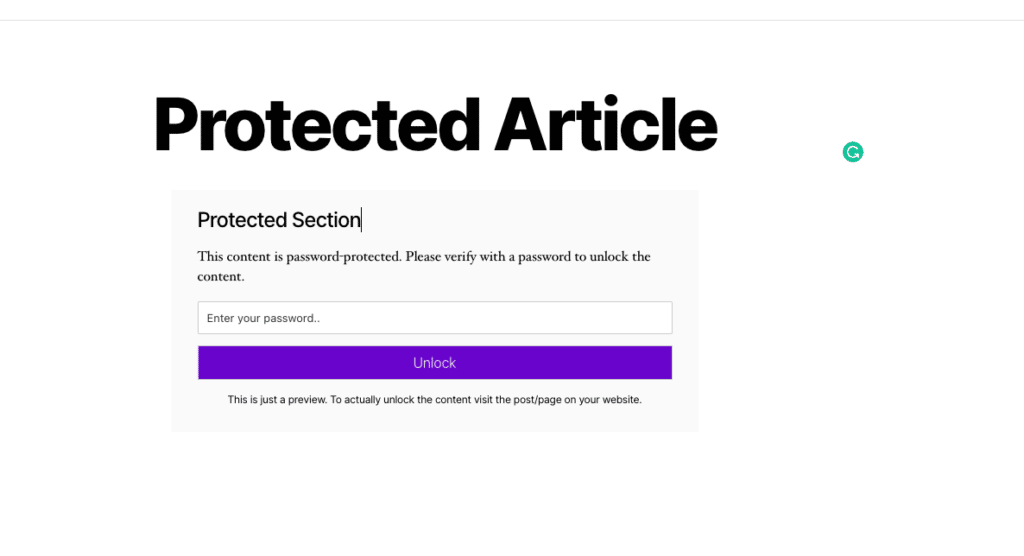
Passster is a much more straightforward way to restrict content on your WordPress website. Unlike a full-blown membership plugin, Passster won’t slow your site down and only has the settings you absolutely need to protect your site content.
If you’re looking to prevent content theft, you’re a blogger who wants simple content restriction options, or you want to keep specific pages safe from bots, Passster is for you.
Passster
Protect your entire website, entire pages, or just parts of your content with one or more passwords.
So now we know the benefits of Passster, let’s go through each protection method and how it works.
Password protect WordPress content
With Passster, you’re able to go beyond the default WordPress password protection and secure your content more reliably.
When password protecting a page, for example, you can either use a single password, a list of passwords, or a pre-created password list.
The password lists give you more options. Allowing you to set if you want passwords to immediately expire after use, expire after a number of uses, or in a certain time frame.
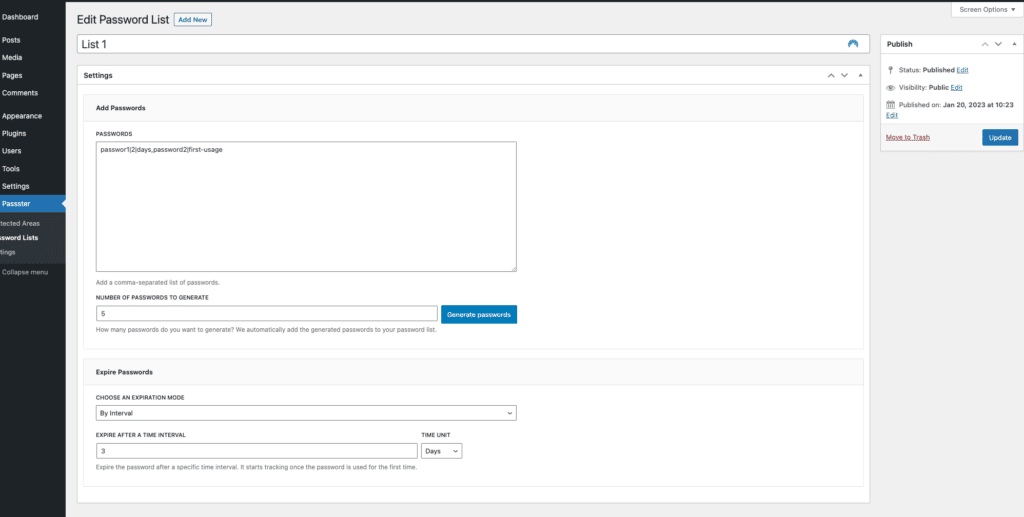
If a visitor enters the wrong password, they’ll get an alert message to notify them.
reCAPTCHA protect WordPress content
The reCAPTCHA test can either be invisible or a checkbox the visitor has to click to confirm. This would look like the image below.
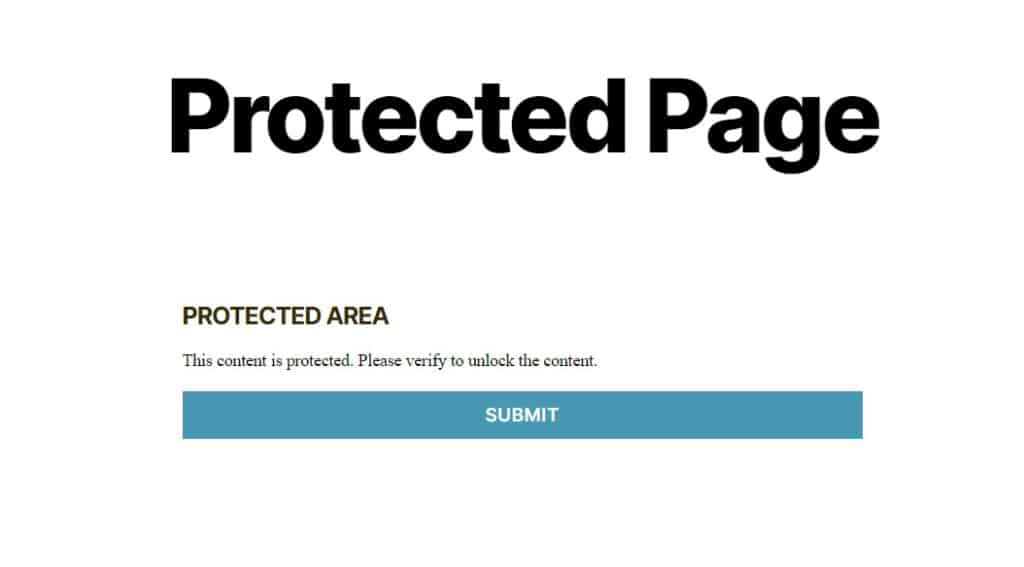
These two methods are particularly useful if your want to prevent your page from bots accessing and damaging the integrity of your content.
Restrict via an encrypted link
You’ll also be able to protect content on your WordPress site with an encrypted link.
This link is entirely custom to the content and can be shortened with a built-in Bitly setting.
When someone visits your site using this link, they’ll automatically gain access to the content on the page. This is because the password to the page is encrypted into the link.
In addition to the above methods, with Passster you can also allow access to your restricted content depending on a user role or username.
When set, these users will have automatic access to restricted pages that remain hidden from non-registered users.
Restrict more than just pages and posts
With Passster, you’ll also be able to restrict parts of a page/post with a shortcode. Or, you’ll be able to protect your entire site.
Restrict part of a page/post
With Passster’s area protection option, you can create part of a page/post to hide behind a password, CAPTCHA, and more.
This would then be added to your normal page or post with a shortcode.
This is particularly useful if you want to hide one element of a page but still have the rest of the page accessible to website visitors.
Restrict the entire site
With Passster’s global protection option, you’re able to create a protected page on your site and force any site visitor to be redirected to that page first. Almost like a protected homepage.
This way, every visitor who accesses your site will have to unlock it via your protection method of choice.
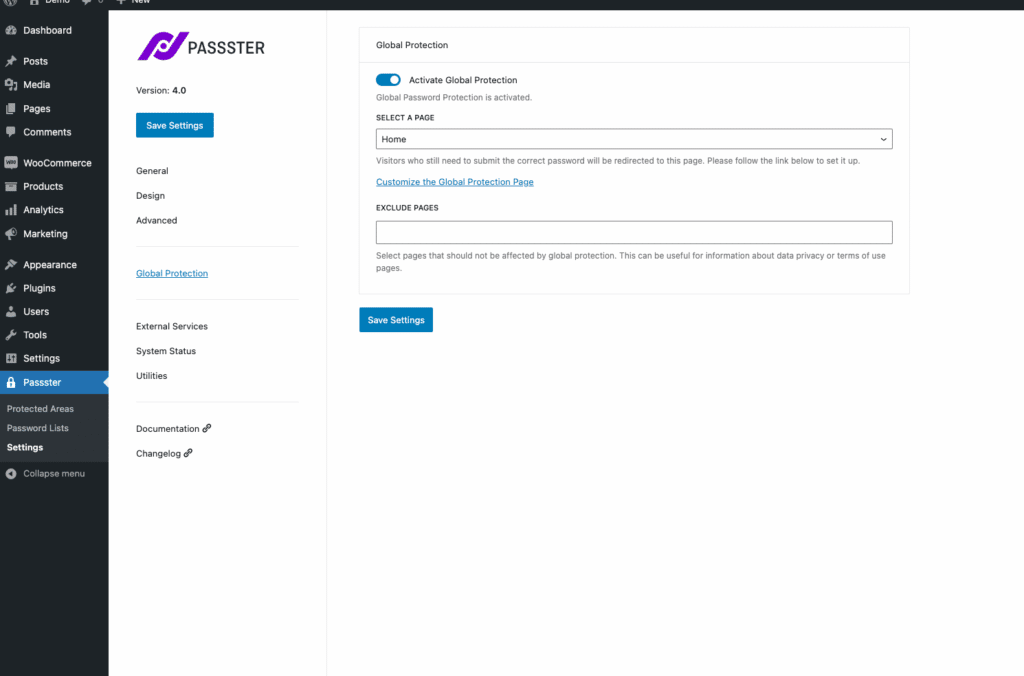
So now we know what Passter can do, let’s get it set up on your site and take a look at the plugin settings.
How to protect WordPress content using Passster
In this tutorial section, we’ll walk you through how to protect a page on their WordPress website using Passster.
We’ll create a single page but show you a few different ways you can protect it.
Step 1: Create the content you want to protect
The first thing you’ll need to do before we create our content is download and install the Pro version of Passster.
Passster
Protect your entire website, entire pages, or just parts of your content with one or more passwords.
Next, we can go ahead and create some content. In this case, we’re going to create a new page in WordPress:
- From your WordPress dashboard, go to Pages > Add New.
- Enter a title for your page and add some content.
- This can be anything you like, Passster also works well with page builders like WP Bakery, Beaver Builder, Elementor, and more.
Step 2: Pick your protection type
Next, we need to decide which protection method we want to use:
- Once you’re happy with your page content, take a look at the right-hand sidebar and scroll down to the Passster (Page Protection) section.
- Click the Activate Protection button and underneath use the dropdown under Protection Type to select the type of protection you want to use.
- Password allows you to set one specific password to gain access.
- Passwords allows you to enter multiple different passwords to gain access. Add these as a comma-separated list.
- Password List allows you to select one of your pre-created password lists. By creating a list rather than just using Passwords, you’ll have more control over your password expiry.
- reCAPTCHA don’t require a password and instead restrict bots and hackers on the page with invisible or visible CAPTCHA.
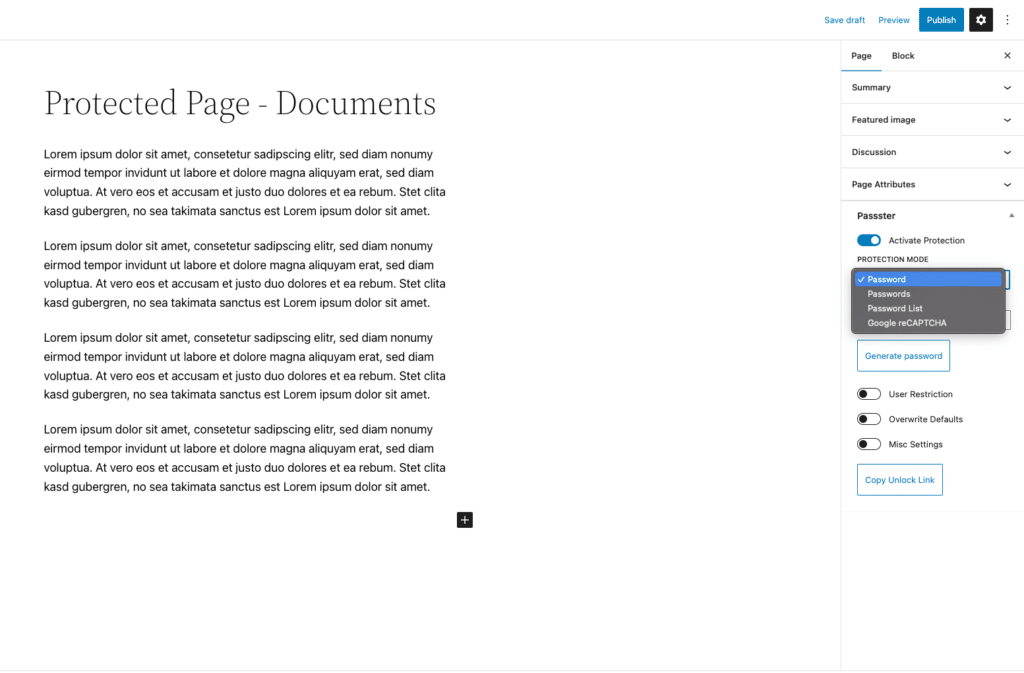
- Once happy with your protection type, you can set a redirection URL in the Redirection field if you require.
- Underneath this are a few settings to allow certain users roles and usernames access to the content automatically.
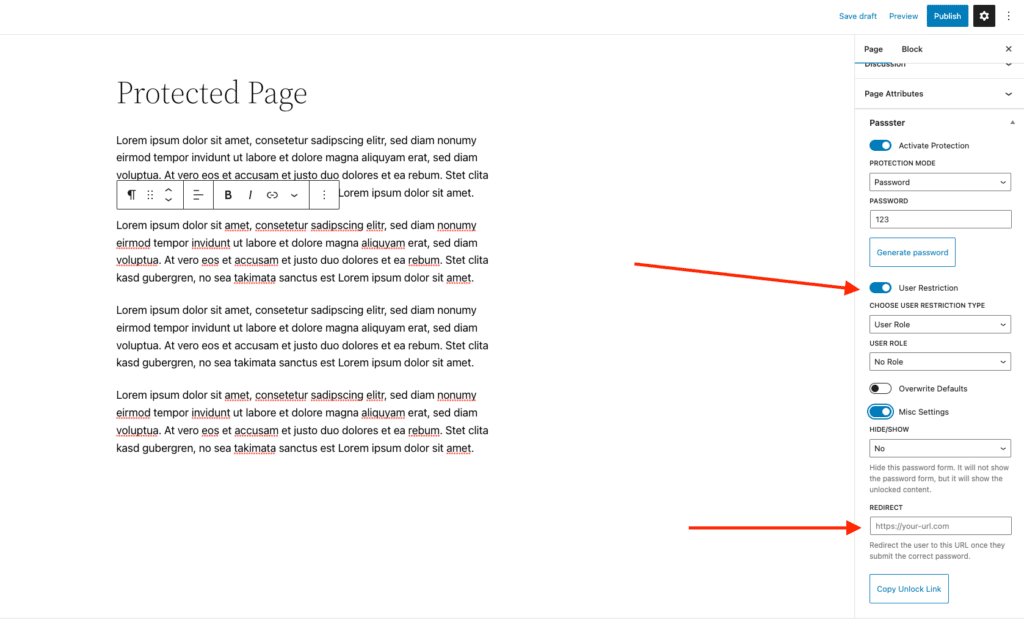
- Then, you have a few options which allow you to customize the text that appears on the protected page. Here you can change everything from the page headline to the instructions, form elements, and button.
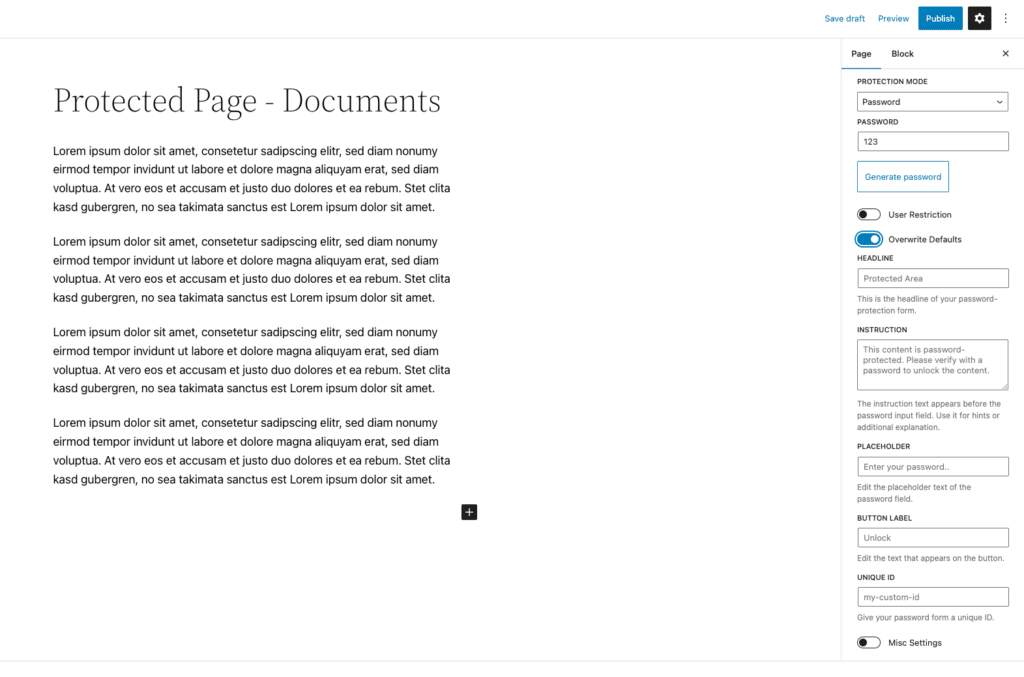
- Lastly, if you want to use the encrypted link method, click on the Copy Unlock link button and you get an encrypted URL to automatically unlock the protected content.
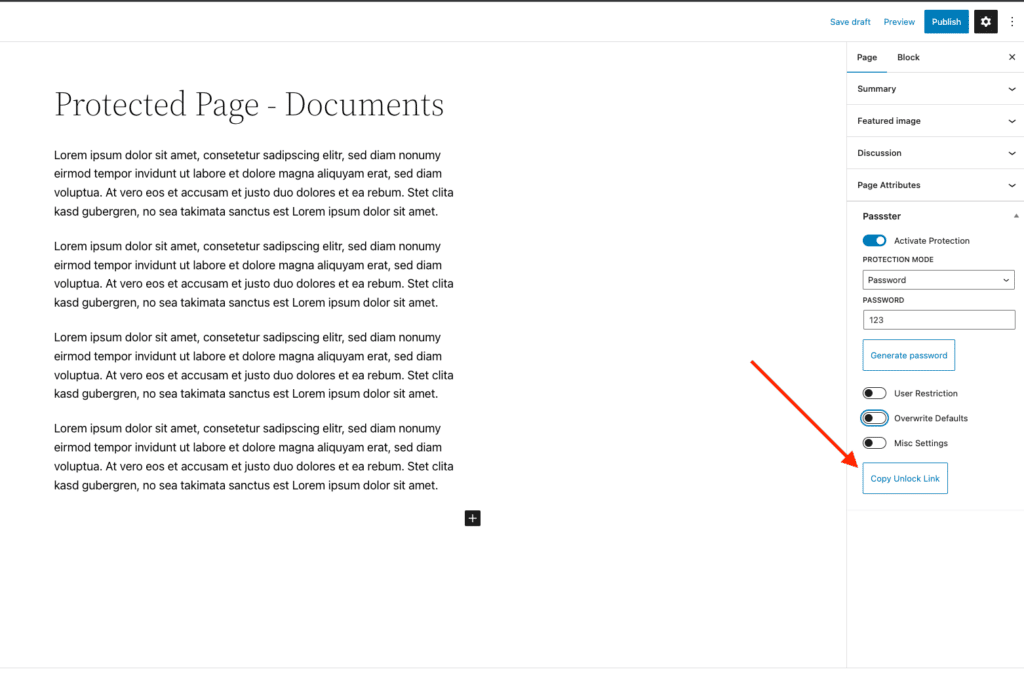
- Once you’re happy with all your settings, click the blue Publish or Update button at the top of the page.
If you’re happy with how your protected page looks, then that’s it – your content is now protected. But, if you’d like to customize how your content protection form looks, we’ll show you how.
Step 4: Customize your protected content style
Passster comes with a few style customization options that you can change including form spacing, text size, colors, and more. These can be found on the customizer settings page.
To customize your form, take the following steps:
- From your WordPress dashboard, go to Passster->Settings->Deisgn.
- Change color, margins, padding, border radius, and more by clicking on the individual sections:
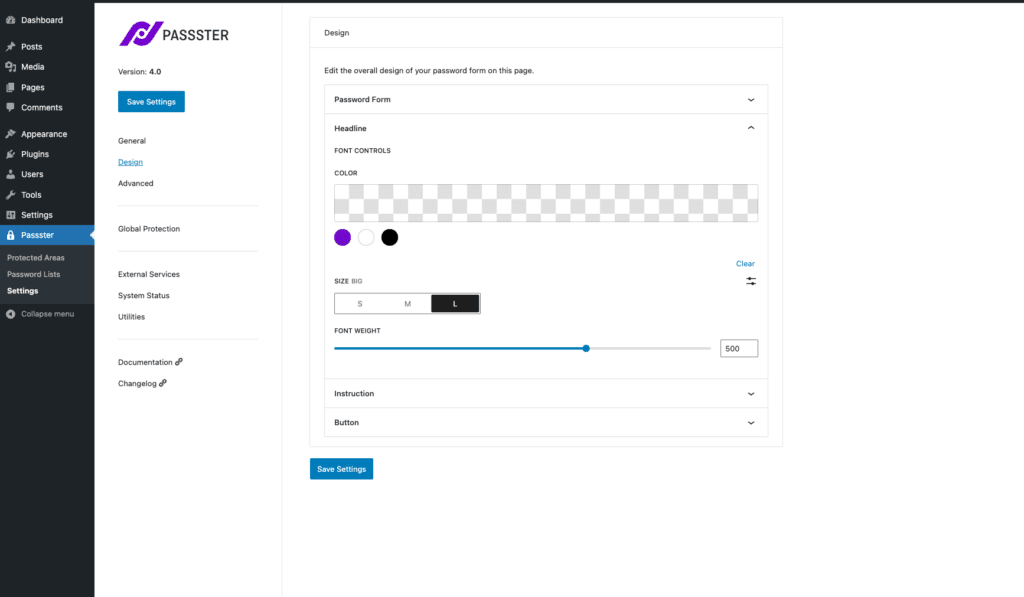
- Once you’re happy with all your style changes, click the blue Save Settings button.
Protect your WordPress website content and pages today
That’s it! The content on your WordPress website has now been protected by a method of your choice.
Each one of these methods will ensure your content is protected on the front-end of your site and will give you plenty of flexibility and options without slowing down your website.
Passster
Protect your entire website, entire pages, or just parts of your content with one or more passwords.